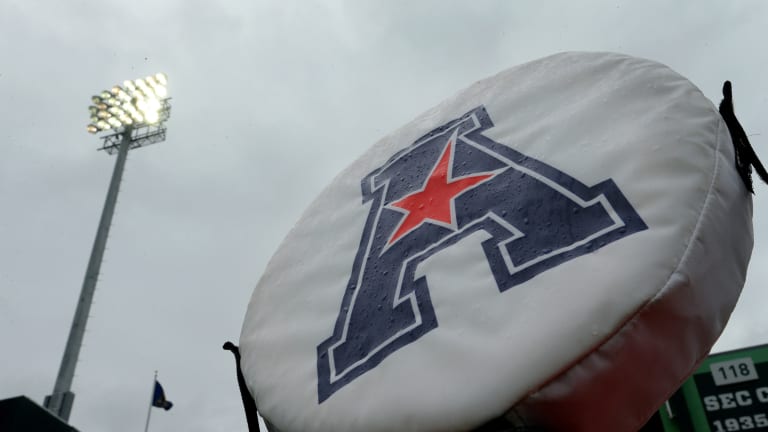
A Jersey Guy: Conference expansion slow down coming?
Mountain West Commissioner Craig Thompson has seen all-or most of it-before.
Thompson, who has been the commissioner of the MWC since 1998 has seniority on all the Power 5 commissioners, as well as the four other Group of 5 commissioners.
Thompson has watched with more than a modicum of interest as college football has moved towards a 12 team playoff and conferences are again reconfiguring themselves.
The biggest moves have been made by the SEC and Big 12, with Oklahoma and Texas opting to move from the Big 12 to the SEC.
That prompted a reaction by the Big 12 to counter, by adding four schools, BYU (independent) and UCF, Houston and Cincinnati from the American Athletic Conference.
The AAC and the MWC are part of the second tier of FBS football, included in the Group of 5 conferences.
The next move will be made by the AAC, which has expressed keen interest in four MWC schools--Colorado State, Air Force, San Diego State and Boise State.
Which brings Thompson directly in the line of fire.
As has been the case throughout his career, Thompson's initial response is measured and logical.
"None of this is really unexpected,'' Thompson said in a phone call on Tuesday. ""If you go back, say to 2010 when the Pac-12 was flirting with the Big 12, there was a high number of changes in conferences among FBS schools.''
Thompson was correct in his recollection.
In 2010, FBS football had 120 schools in 11 conferences. Since that time two conferences (Big East and Western Athletic Conference disappeared in football) and one (the AAC) has been added, with 130 FBS schools.
Of that original grouping in 2010 46 of the 120 schools are in different conferences.
"Figuring it out is way past Conference 101,'' said Thompson, who was part of the creation of the Sunbelt before moving to the Mountain West in 1999. "It's challenging, but you have to follow some basic rules.
""Every member has a vested interest in themselves, that's priority No. 1. Institutions follow their own course in what is best for them.''
Thompson acknowledges that MWC schools have been contacted, with the obvious ones being Boise State and San Diego State, with a second tier which now include Colorado State and Air Force, all of which are in the AAC's scope.
"Our institutions have been approached,'' said Thompson. "We're in constant communication with each other. We're also looking for possible new members as well as dealing with our current members. There's a bunch of stuff on the horizon.''
But then Thompson paused and took off any rose colored glasses that some other conference commissioners might be viewing the world and gave a reality check which could slow down or halt the reconfiguration process very quickly.
"The key question is where do you to be four years from now,'' he said. "It's very challenging.
I'm just trying to get people to deal with facts. I want to know, not about potential. When I'm talking with people, I want to see a copy of that television contract and see what it actually pays. ''
Thompson contends that there is virtually no difference in payouts between his conference and the AAC with a configuration which is missing its top 3 football market places in Cincinnati, Houston and UCF.
He asks if the money is basically the same, why would a school from the MWC jump to the AAC, which pays the same amount of television money and increases the overall travel budget as well as increasing distance, which becomes a factor when you are talking about sports other than football.'
Thompson said that he watched one of his teams (Wyoming) play UConn on Saturday.
""They must have mentioned it three times that the two schools were 1,900 miles apart,'' said Thompson. "That' ok in football on a Saturday but when you consider the other factors like mid week games and missed class time, which could be as much as two days. That should mean something.''
Thompson then hits the pause button about conference reconfiguration.
""There's a lot of talk about conferences, including us (12 teams) and how we will expand. "But you go back to tv, which pays for live programming and QUALITY programming. If you look around with what's out there, you ask where is the value in making ANY changes. Is it worth it?'
Thompson acknowledges that Power 5 conferences still have the clout ($$$$) that the Group of 5 conferences never will, and that the Big 12 has hinted that it may not be done in expanding, which again puts the MWC back in the cross hairs since schools such as San Diego State or Boise State again come into focus.
Thompson acknowledges that despite increased buyout numbers, the MWC can't stop anyone from leaving.
But he offers some advice.
"I tell our schools to be the best they can be, while they are here,'' he said. ""But does it make sense for some schools to make a move for no financial gain and then make a second move a few years later?
.